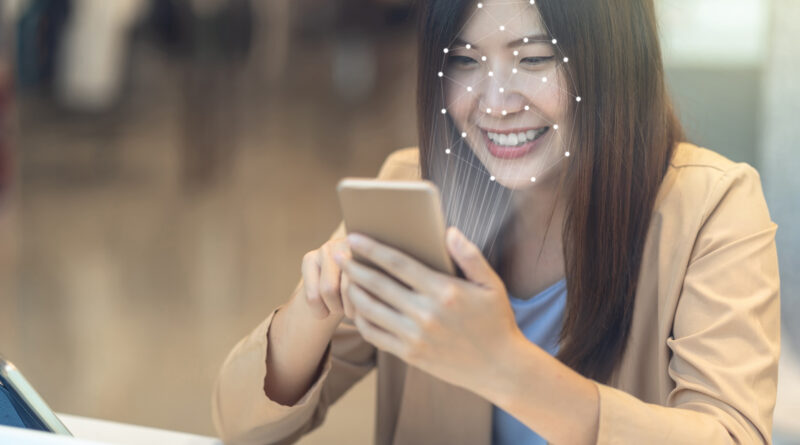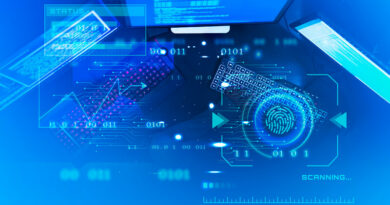Face Recognition: Improved Benefit? Or Erosion of Privacy?
The following is a guest post from Carl Gohringer, founder of Allevate Limited (www.allevate.com)
A Surveillance Society?
I sat in Heathrow waiting for an early morning departure for a business trip. Sipping my coffee, I look casually around trying to spot the cameras. They’re cleverly hidden. Am I being watched? Doubtful. Am I being recorded? Almost certainly.
This is a daily fact of life for most Londoners. It’s widely known that our city is one of the most heavily recorded in the world; a fact that is consistently debated and often criticized. Yet for all the discussion, the fact remains. We don’t like it, but we accept it. Why? Personally, my true dislike is more of the necessity of this fact rather than the fact itself.
Carol Midgley wrote an excellent opinion piece (The Times, Sat 27th August, 2011) entitled “I’ll pick Big Brother over a hoody every time”. I recommend a read. Though clearly biased, and seemingly designed to stoke the debate with anti-CCTV campaigners, her conclusion was simple: In the wake of the London riots, the privacy-versus-necessity debate of CCTV is now all but dead. Do I agree? Let me come back to this.
Face Recognition and CCTV
Enter Biometrics. Face recognition technology to be precise. This technology, along with the wider field of video analytics, is set to transform CCTV surveillance. Video analytics is arguably a nascent technology, but face recognition on the other hand is here. Ready to deploy. Now. A recent study by the US National Institute of Standards and Technology (NIST) demonstrated that the accuracy achieved by the first place vendor (NEC) can provide clear and measurable benefits to a range of applications, including surveillance.
It seems that every new technology brings a realisation of new benefits and efficiencies, countered by a plethora of malicious uses of the technology by the less desirable elements of our global society, quickly followed by counter-measures and protections. This is a saga that we are all already familiar with in our daily lives. Examples range from the severe and extreme of nuclear medicine versus atomic weapons, through to online credit-card shopping versus financial identity theft. I’ve recently had a credit card used for over £3,500 of illegal transactions. Though this incident was highly inconvenient and disruptive to my life, I did not hesitate to accept a replacement card. Not to do so would have unacceptably disenfranchised me from modern society.
Back to face recognition. It hasn’t taken long for business minded technology companies to devise a whole range of new uses of this technology, all focused on delivering bottom line business benefit. Almost as quickly arrive the cries of the privacy advocates. I’ve been reading with interest the sudden explosion in main stream news over the past few months highlighting new uses of face recognition, while very carefully considering the concerns vociferously raised by the technology’s opponents. A key fact often cited is that the technology is not 100% accurate. Even an excellent identification rate of 97% can produce a significant number of false identifications and / or missed identifications in a large sample population.
Let’s take a look at some examples.
Public Safety and Policing
While I sat here in the terminal waiting for my flight, I’ve already grudgingly accepted that images of me sipping my coffee are almost undoubtedly being recorded. I may not be aware, however, that when I passed through security my photograph was taken. This wasn’t immediately obvious or openly advertised, but it happened. Shortly, my photograph will be taken again when I board my aircraft and compared to the photograph taken at security. International and domestic passengers share a common departure area, and this is done to ensure boarding cards aren’t swapped, thereby potentially enabling an international passenger to transit through to a domestic airport and bypass immigration controls. On a 1:1 verification, false matches are very low. If I’m a legitimate passenger, my concern is that the two photographs do not match, for which the worst case scenario is inconvenience.
Perhaps the borders agency is also comparing my photograph against a known watchlist of suspect individuals. This nature of deployment is usually used to enhance existing procedures, and not replace them. The system will provide increased security, in turn further protecting my safety while flying. I’m OK with this. Of course, there is also the prospect of misidentifying benign travellers. Though unavoidable, as long as the number of false matches are kept sufficiently low to ensure the cost of dealing with these exceptions doesn’t obliterate the benefit realised from the system, it can be argued that the greater good justifies the inconvenience faced by the occasional innocent passenger while their true identity is verified.
Upon my arrival at my destination, I may very well be offered the opportunity to use my new e-passport to speed through immigration at one of the many shiny automatic e-Gates springing into operation. In the early stages these definitely were a great benefit, allowing me to march past the long queues of travellers and expedite my passage through the airport. No complaint from me. As long as false matches are lower than what is achieved by a live border guard (which many studies suggest they are), then security should be improved. And false matches only apply to illegal passengers travelling on a false or stolen passport. Exceptions generated by valid travellers who do not match with their passport will generate some inconvenience by necessitating they speak to a live border guard. As e-gates become more commonplace, I predict I’ll just be queuing in front of an automatic barrier instead of a manned immigration booth. However, the efficiencies achieved should enable the border guards to concentrate on more intelligence-led activities, rather than simple rote inspection of passports, thereby increasing security and putting my taxes to more efficient use.
As I move through the airport, or for that matter in any public location such as a stadium or railway station, law enforcement authorities may be using my captured image to search against a database of suspects. Does this trouble me? Let’s look at a couple of scenarios.
I’m already being recorded. If I were to commit a crime, then it is likely that the video would be retrieved and officers would try to identify me. This is already happening and I doubt anybody would argue that this is an invasion of privacy. If face recognition technology can assist them with this arduous and tedious task, perhaps by automatically trying to match my face against databases of known offenders, and saving countless hours of police time, I’m all for it. Too bad for the criminal.
(I was incensed by the meaningless violence and destruction demonstrated during the recent riots in London. Newspaper reports have indicated that the UK’s police will be examining CCTV footage for years to come in their efforts to bring the perpetrators to justice. I am absolutely in favour of anything that can be done to expedite this process and save police time.)
But as a law-abiding citizen carrying on with my own business, how do I feel about having my face automatically captured and compared against a watchlist database of “individuals of interest”? There is potential to cause disruption to an individual’s life or place them under undue suspicion if they are falsely identified. That my face is being actively processed rather than just recorded gives more cause to pause and consider.
Having done this, I am prepared to accept this use case, if the technology is operating at a sufficient level of accuracy to ensure that the chances of being misidentified while conducting my daily activities remains low. I also expect the technology to be deployed wisely in situations where there is demonstrable benefit to public safety, such as at transport hubs, large gatherings, public events or areas of critical national infrastructure.
Most people already accept that the reality of the world today necessitates certain infringements on our liberties. The introduction of technology is a key tool in the fight against crime. No system is perfect, and the potential for an undesirable outcome of a system should not always result in the abolishment of that system. Few would argue, for example, to abolish our judicial systems and close our prisons to eliminate the possibility of a miscarriage of justice. Similarly, the benefits to public safety from face recognition are too great to ignore, though we must continuously strive to minimise the false identifications.
I agree with Ms. Midgley on this one.
Commercial Applications
Most criticism that I have been reading in the press in the past view months appears to be levelled at the widening application of face recognition in business related or commercial applications, not with public safety.
My flight is about to board, so let’s continue my journey through the terminal. As I saunter to my gate, my attention is caught by an impressive advertising display; a multi-plasma video wall. It was the amazing technology that caught my attention rather than the advert itself. Just as I’m about to glance away, the sunlit beach and blue ocean depicting the under 30’s surfing holiday fades away, to be replaced by a two-for-one spectacle offer, followed by a distinguished gentleman telling me how easy it was for him to “wash that grey away”.
As I self-consciously stroke the hair at my temples, I wonder: Was this a mere co-incidence? Multiple vendors delivering solutions for advertising have announced technology that can count the number of people watching an advert at any given time, and even estimate their age, dwell time, sex and race. While providing invaluable information for the advertiser, it can also allow them to dynamically change the adverts in real time to more appropriately target the demographic of the current viewer(s). Recent reports in the Los Angeles Times (21st August 2011) suggests that this is already widely deployed in Japan, and is being considered by the likes of Adidas and Kraft in the UK and the US.
While this is not technically face recognition, it is still worth noting as much of what I have been reading has been lumping the two technologies together. The key consideration here is that this form of technology is not actually identifying anybody, or extracting personally identifiable information. This doesn’t bother me in the least. Businesses have always tried to use whatever edge they can to more tightly tailor their message to their customer’s specific needs and wants. It may even benefit me by alerting me to more relevant products or services.
What if, on the other hand, the advertiser had negotiated an arrangement with another organisation, for example a social networking site such as Facebook. If they supplied them with an image of my face, along with information on which portion of the advert caught my attention, Facebook might be able to identify me from its database of photographs, enabling them to harvest valuable information about me. While I can see this would present a huge commercial advantage to them, and whomever they chose to sell this information on to, I can only hope that the commercial damage from the backlash of incensed users would outweigh the gain.
If I have some leisure time while on my business trip, there will doubtlessly be many activities at my destination to occupy me. I may have a quiet drink in a bar, or perhaps take a punt at the tables in the local casino. And yes, face recognition technology is being used even in these places. It’s been reported that bars and clubs are using gender and age distinguishing cameras to count people in and out, and make this information available over mobile phone apps. The youth of today can now determine before they set out which establishment holds their best chance of success. While I am well beyond having any use for this particular application, I can see how this may catch on in certain demographics of society. Any reputable establishment should clearly display such technology is in use and should make no attempt to harvest or make available any personally identifying information. Are all establishments reputable?
More concerning to me is the increasing use of face recognition by social network sites. Both Google and Facebook are actively exploring uses. Automatic tagging of photographs being uploaded to Facebook is already occurring. Being inadvertently photographed while on my business trip and automatically tagged when the photographer uploads it does not appeal to me, no matter how innocuous my activities at the time may happen to be.
Recent studies published by Carnegie Melon University demonstrating the potential to use large databases of photographs on social networking sites to glean confidential information should also be a cause for concern. The younger generation of today appear more and more willing to share intimate and private details online, without any thought (in my view) of the longer term or wider ramifications of doing so. This is an issue that is much larger than face recognition, but I can understand the worry that face recognition can help to tie it all together.
Improved Benefit or Erosion of Privacy?
When I first entered the biometrics field, I was attracted by the “neatness” factor of the technology, and of the potential for it to deliver benefits to society. I have to admit I paid scant attention to privacy concerns. Over time, as the voices of privacy advocates grew louder and more numerous, I started to listen and then to actively seek out their opinions. I am still a firm believer in this amazing technology, and endeavour to play an active role in its application for the positive transformation of society. However, I am grateful for the messages and insight provided by these campaigners; they have definitely transformed my thinking, and have made me consider much more carefully the application of biometrics.
From a law-enforcement and public safety viewpoint, face recognition holds great potential to increase the security of our society. By its very nature, our government holds power over us and our society, which is why it is our responsibility to choose our governments carefully. We have no choice but to hold a certain level of trust and faith in our law-enforcement organisations. Our society today contains more checks and balances than ever before, and our politicians our more in-tune with and responsive to the public mood. If this faith breaks down, then so does society.
In commercial applications, I also believe there is the potential for significant benefit to be realised from face recognition to both the consumer and businesses, but I am more concerned about the potential for abuse. To a certain level, the market will decide if the application of the technology is appropriate or not. Ventures people don’t like will fail. However we cannot always rely on market forces, and it is our collective responsibility to speak out when the need arises. Though it often lags behind, over time legislation keeps up with the advancement of technology. As our society changes with technical innovation, so too will the rules we collectively decide to govern our society. We will settle into an equilibrium reflecting the needs and views of all. But there will be a learning curve, and we will make mistakes along the way. That’s how society works.
So, does face recognition represent an improved benefit, or an erosion of privacy? I suggest it has the potential to be both. It is everybody’s responsibility to ensure the benefit is worth the price paid. I absolutely believe we must have both the proponents of this technology and the advocators of privacy; we all have a role to play to decide how face recognition will be applied over time.
The abolishment of either the technology or the voices of those monitoring its use and advocating our privacy would be to the detriment of society.
Final Thought
Just before I board my flight, let me leave you with this final thought. Imagine for a moment that a loved one of yours has come to harm. The authorities can use face recognition to aide in their recovery, and / or to ensure that justice is done. Are you concerned with privacy?
As founder of Allevate Limited (allevate.com), Carl’s focuses on the promotion and marketing of large-scale and global identification infrastructure projects using biometric technology.













I think this is a very perceptive and thoughtful piece. What is a reasonable expectation of privacy has dramatically changed in recent years. Public space has become ever more public. It used to be that only those close to you had the opportunity to recognize you. Now, someone removed many miles or on the other side of the planet may recognize you in real time. Marketers may predict your travels and push information at you about merchants along your path. Governments charged with a duty to protect society may also use the same information. I think the large question is can we protect our privacy in those public settings? If we wear a mask or disguise ourselves that act alone may trigger suspicion about our intent. Is the price of technology the inevitable erosion of what is the reasonable expectation of privacy? Do we have any option to opt out — other than moving into a cave and never leaving? Should we be more worried about our big brother (government) or our big sister (the commercial world)?
Progress has always been a two-edged sword. Is it our view of privacy that is out dated? I don’t have the answers to this, but as an advocate for Privacy by Design (look it up), I believe we all have a role to play in confronting this issue and setting reasonable expectations.
Thanks for the comment. You bring up some valid points about the trade off between the want and desire to live in free and open societies with technologies that will arguably raise the standard of living for many and giving up some of our privacy. We found Carl’s “Final Thought” one of the most provoking parts of the piece in that he raises the question about looking at the issue from the other side of the spectrum. If you are someone who has been victimized or perhaps a loved one, are you willing to use a technology you have otherwise shunned and rejected in order to apprehend a perpetrator? We wonder…
I think too often we use motive to justify an act we would not justify objectively. I’m not sure that motive should be the deciding factor. But, you raise an interesting point to consider in how the problem is viewed.
Best IP camera helps to reduce crimes